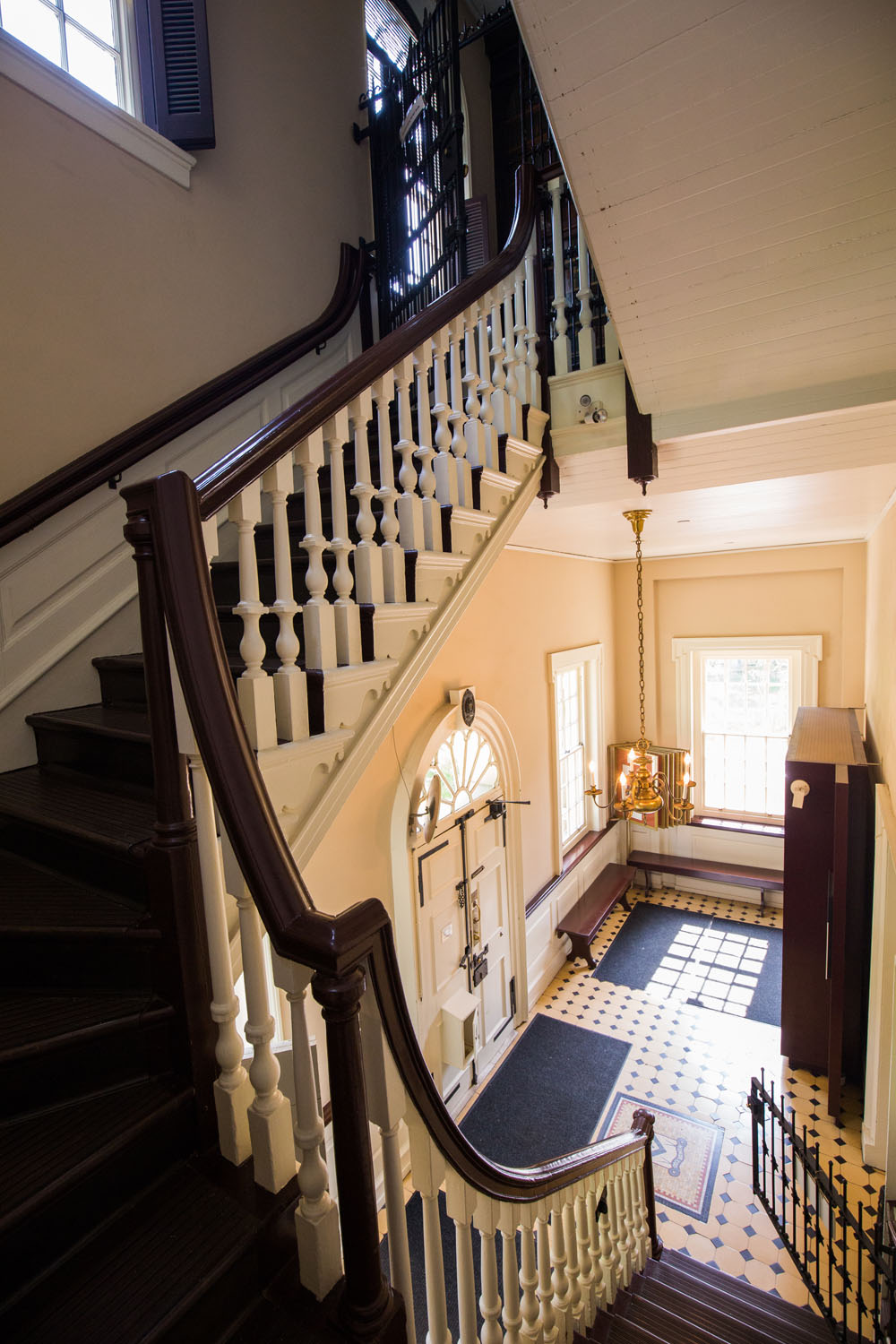While You're Here
From the Outside
When arriving at Carpenters' Hall, walking from Chestnut Street, New Hall (the Military Museum) is on the right. Built in 1790 by The Carpenters’ Company, New Hall was occupied by the Company when tenants made meeting in Carpenters' Hall difficult. Reconstructed in the 1950’s, today it serves as the Independence National Historical Park Military Museum, with displays and information.
While approaching the outside of Carpenters' Hall, notice the three flags flying by the upstairs window. They are the American flag, the Pennsylvania flag, and The Carpenters' Company flag. Also displayed on the outside of the building are fire marks of the Contributionship for the Insurance of Houses from Loss by Fire, the Mutual Assurance Company, and the Fire Association. The design of the building is also interesting to note. It is a symmetrical, two-story, cross-shaped Georgian building with four pediments, patterned off a design submitted by Carpenters' Company member Robert Smith in 1768. The lot for the Hall was purchased the same year, and construction began in 1770. The bricks in the building are laid in "Flemish bond," set with decorative blackened ends which are laid at right angles in order to help tie together interior courses of brick, strengthening and thickening the walls.
Inside the Hall
Entering Carpenters' Hall, there is a front hallway, with displays of a variety of carpenters' tools and a collection of portraits and photographs of many of The Carpenters' Company members, past and present.
In the main room, there are displays featuring information on most of the building's history. To the immediate left and right are two gilded frames, listing the names of The Carpenters' Company members, dating back to the earliest records. Above the main doorway is a portrait of Washington, painted by Boston artist Jane Stuart (1812-1888), one of several copies produced throughout her lifetime. The original of this portrait, done by her father, Gilbert Stuart, hangs in the Library of Congress in Washington, D.C.
On the east wall are two original Windsor chairs used by the delegates of the First Continental Congress in 1774, known stylistically as a “Sackback” and “Comb-back”. At the time, however, a hallway divided the room, with the 56 delegates meeting only in the east half.
The portrait aside these chairs is of Peyton Randolph, President of the First Continental Congress and occupant of the comb-back “Speaker’s chair”. Continuing further, there is a banner hung over the mantle on the east wall, which was carried by The Carpenters' Company in the 1788 ratifying the Constitution.
Heading toward the west side of the Hall, there is a large desk and three chairs used today by the officers of The Carpenters' Company during their Quarterly Meetings. The portrait on the south wall is of Gunning Bedford, an early Carpenters' Company member and officer. The banner featured on the west wall was carried by The Carpenters' Company in an 1832 parade, this time celebrating the 100th anniversary of George Washington's birth. To the right of the banner, on the north wall, is a portrait of early Carpenters' Company member and contributor to the building of the Hall, Matthew McGlathery, by artist Raphaelle Peale.
In the center of the room is an extremely accurate model created by the Hagley Museum in Delaware, used to show construction methods of the 18th century. At the front of the model of Carpenters' Hall stands Robert Smith, Master Builder and architect. The model was funded by a National Endowment for the Humanities grant and Carpenters' Company member donations.
Other Sites Nearby
Carpenters’ Hall is located in the heart of the historic district, surrounded by monuments within Independence National Historical Park and many other impactful historic sites, museums, and independent boutiques; this culturally rich area stretches from the Delaware River to 7th Street, and from Vine to Lombard streets.
To learn more about the area that encompasses the birthplace of our Nation, check out Visit Philly’s suggested sites and itinerary for the Historic Philadelphia Trail.













